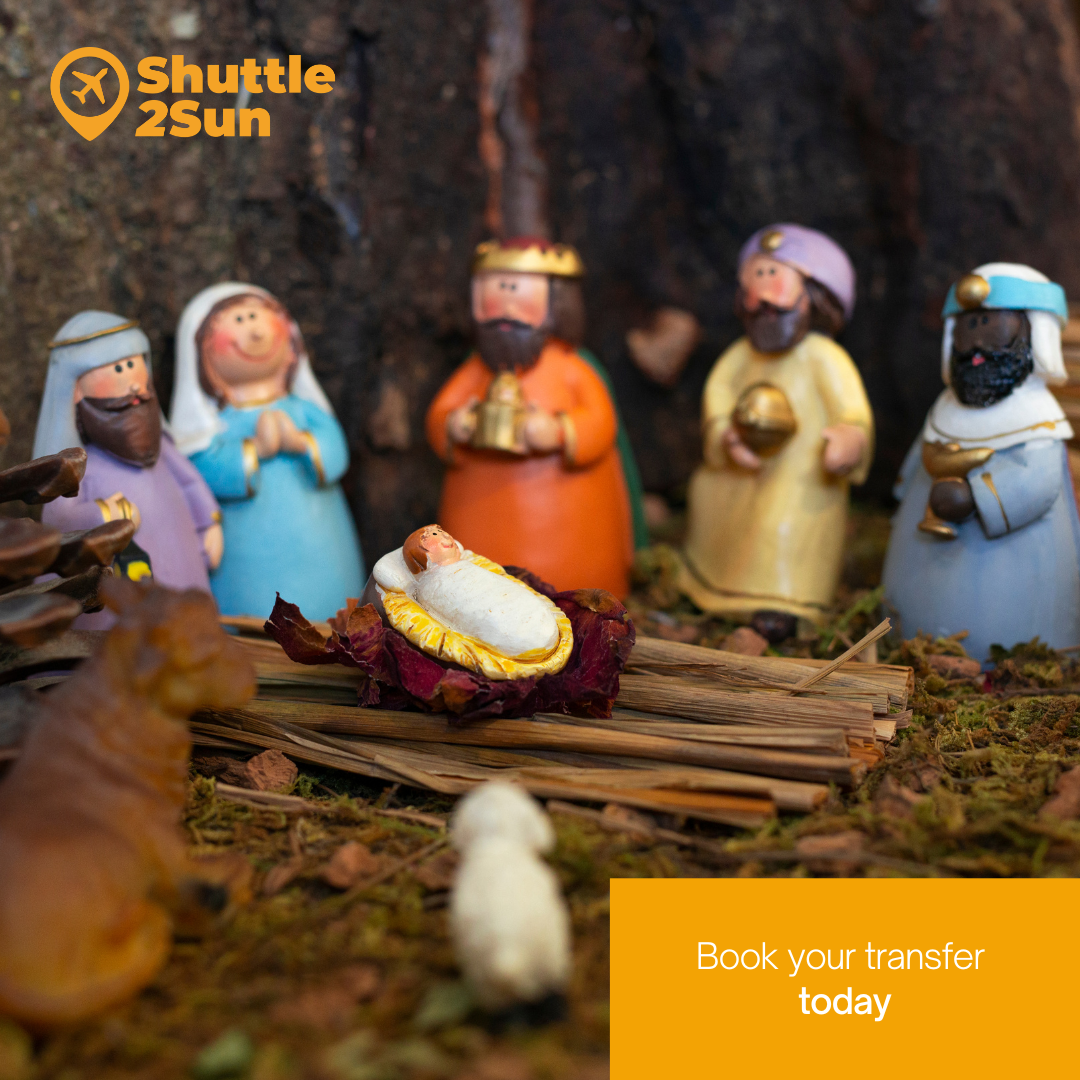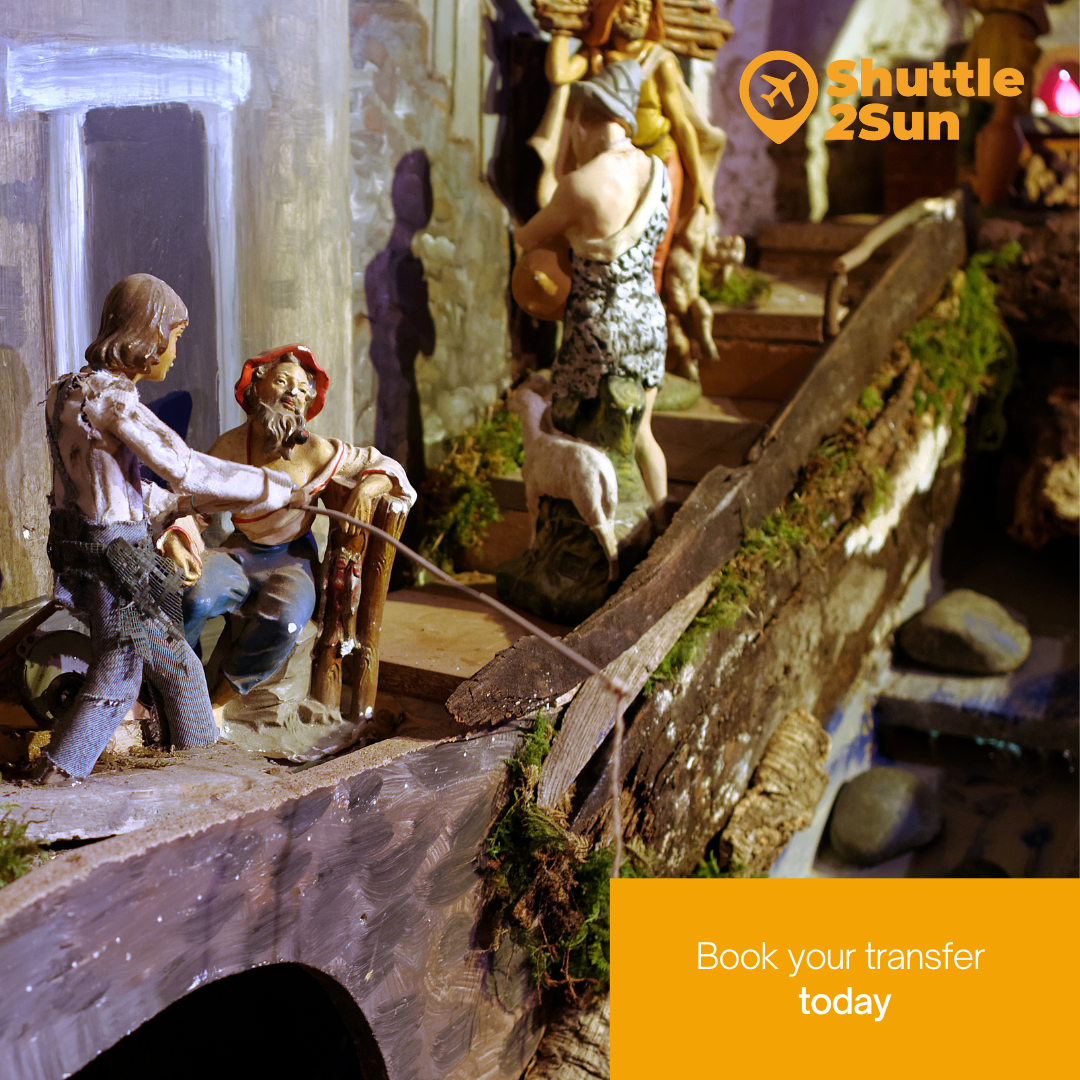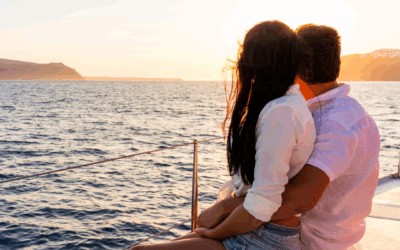Nativity scenes are a deeply-rooted tradition in Catalan culture, symbolising the connection between Christmas spirituality and popular artistic expressions. These nativity scenes, which recreate the scene of the birth of Jesus, are not only a decorative element, but also a cultural representation that blends creativity, history and religiosity. Their production has evolved over the years, from humble homemade nativity scenes to the complex scenographies that are displayed in squares and public spaces.
In Catalonia, the nativity scene is much more than a Christmas tradition; it is a way of preserving cultural identity. Families spend time putting together their own nativity scenes, incorporating natural elements such as moss, cork and handmade figures. In addition, nativity scenes in public spaces, such as those set up in cities and towns, attract thousands of visitors during the holidays. This tradition, in addition to its religious value, is a symbol of social cohesion, creativity and local pride.
Shuttle2Sun puts at your disposal its shared transfer services and private transfer services, low-cost and sustainable, so you can enjoy all these performances in Barcelona, Costa Dorada and Costa Brava, from Barcelona airport, Barcelona port, Reus airport, Girona airport and AVE Camp de Tarragona train station.
Nativity scenes in Catalonia
A nativity scene is an artistic and symbolic representation of the birth of Jesus, the centrepiece of Christmas celebrations in many cultures, especially in Catalonia. Traditionally, it includes figures such as the baby Jesus, the Virgin Mary, Saint Joseph, the shepherds, the Three Wise Men and the animals, all arranged in a setting that recreates a rural or biblical environment.
The nativity scene can take different shapes and styles, from the simplest and most minimalist to elaborate settings with moving elements, lights and detailed landscapes. In Catalonia, the creativity and personalisation of each nativity scene stands out, often reflecting local traditions, such as the inclusion of the caganer, a humorous and peculiar figure symbolising fertility and prosperity. This detail makes the Catalan nativity scene a unique symbol of cultural identity.
Setting up a nativity scene is an activity that brings families and communities together, promoting the transmission of values and customs. In addition to its religious character, the nativity scene is an artistic and cultural expression that unites generations, allowing tradition to endure in an ever-changing world.
Living nativity scenes in Barcelona
A very common way of representing these nativity scenes is with living nativity scenes, an enchanting tradition that relives the story of the birth of Jesus with actors in real settings.

This year, Barcelona’s neighbourhoods are putting on shows such as the one in Carmel and La Marina. What’s more, just a few minutes outside the city, the largest living nativity scene in Catalonia can be found in Parets del Vallès, a monumental work that attracts thousands of visitors due to its magnitude and realism.
Also, some 40 minutes from Barcelona, the nativity scene in Corbera de Llobregat stands as the most famous in the area, with decades of tradition. This unique spectacle combines performances, natural landscapes and a festive atmosphere that captivates locals and tourists alike.
Enjoy all these nativity scenes with Shuttle2Sun‘s low-cost and sustainable shared transfer services and private transfer services to Barcelona from Barcelona Airport, Barcelona Port, Reus Airport, Girona Airport and Camp de Tarragona AVE train station.

The oldest living nativity scene in Catalonia, in Castell d’Aro
Castell d’Aro is a cultural gem and a historical reference point for Christmas festivities in the region. Since its creation in 1959, its living nativity scene has stood out for its uniqueness, being a set of large-scale scenes set in a natural environment that allows you to walk through them in the open air. It will be available on 21, 22, 25, 26 and 29 December, and on 1 January.
The Living Nativity Scene in Els Estels, in Vandellós and L’Hospitalet de l’Infant
The Living Nativity Scene in Els Estels is held at the Masia de Castelló, a small uninhabited village in Vandellós i l’Hospitalet de l’Infant, and is considered one of the most authentic living nativity scenes in Catalonia. During the weekends around Christmas, this corner comes to life by recreating traditional scenes of rural life, such as old trades and everyday activities. Visitors can enjoy a realistic representation of the birth of Jesus in a stunning natural setting.
This nativity scene is emotionally and historically charged, as it revives a village that was abandoned in the mid-20th century. It is one of the most outstanding festivities in the region and attracts thousands of visitors every year, who are immersed in a magical atmosphere thanks to the faithful recreation of the past.
A most original idea, in Tarragona
The Monumental Nativity Scene at the Museu Bíblic de Tarragona, which can be visited until 1 February, is inspired by the city’s ancient engravings and recreates scenes from the birth of Jesus in the historical context of 19th-century Tarragona. The nativity scene includes miniature reproductions of the city’s most emblematic monuments, such as the forum and the Roman circus, as they were represented at the time. The figures that make up the crib come from the collection of the Museu Diocesà and were created by the crib-maker Joaquim Nolla.
25th anniversary of the Sand Nativity Scene in La Pineda
The Sand Nativity Crib in La Pineda, on Costa Daurada, is celebrating its 25th anniversary this year with a large-scale event in the Pinar de Perruquet park. This monumental nativity scene is unique in that it is sculpted entirely in sand, an artistic proposal that stands out for its size and creativity. Artists from all over the world participate in the creation of the figures, combining the technique of sculpture with the Christmas theme. In addition, this year, the nativity scene will have a special gastronomic offer and concerts that will complement the Christmas experience. The exhibition can be visited until 7th of January.
Don’t think twice and discover this deep-rooted Catalan tradition! Remember that Shuttle2Sun offers its shared transfer services and private transfer services, low-cost and sustainable, so you can get to Barcelona, Costa Dorada and Costa Brava, from Barcelona airport, Barcelona port, Reus airport, Girona airport and AVE Camp de Tarragona train station.



